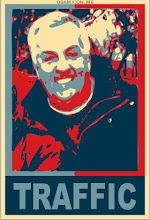Good Question: How Do You Drive In A Roundabout?
Jason DeRusha, Reporter
WCCO-TV- Minneapolis - St. Paul, MN
Broadcast 4/30/08
http://www.wcco.com/video/?id=41040@wcco.dayport.com
They are appearing more and more often in Minnesota: roundabouts. Instead of a traffic signal or a four-way stop, there's a traffic circle, where drivers yield and then turn right.
But because it's a fairly new innovation to this state, some drivers are getting confused. "It feels unorganized doesn't it?" asked one woman, outside an Edina roundabout. "I've seen a couple people going the wrong direction," added another woman, outside the new Richfield roundabout.
According to the Minnesota Department of Transportation, there are at least 30 roundabouts on Minnesota roads today with 40 more expected to be completed by the end of 2008. "It's going to be a learning curve for Minnesotans to get used to traveling through a roundabouts," said Wayne Houle, City Engineer and Director of Public Works for the city of Edina. Edina just installed three roundabouts near the Galleria shopping mall, near West 70th Street and France Avenue. "It's going quite well," said Houle. "We haven't had an accident since they were installed. No fender-benders."
Houle said the most important rule to remember about roundabouts involves yielding. "The vehicle that's inside the roundabout has the right-of-way," he said. Basically, whenever there's a gap in traffic in the circle, that's the time to pull into the circle. When you're inside, you shouldn't stop until you exit.
The Edina roundabouts have a colored, raised section of asphalt on the interior of the one-lane traffic circle. That is not for drivers. "The colored pavement is a truck apron," said Houle. It's intended for trucks who have a hard time making the tight turn of the circle.
A study of roundabouts funded by the Insurance Institute for Highway Safety found crashes down 38 percent, after nearly two dozen intersections were converted to roundabouts. Crashes with injuries dropped 76 percent. Other benefits: roundabouts are cheaper to install than putting in a signal, and traffic tends to flow more smoothly and at lower speeds.
"The other thing about roundabouts is that they're better for air quality," said Houle. That's because there's no sitting at a red light, idling. In Virginia, a study found the installation of 10 roundabouts saved more than 200,000 gallons of fuel each year, based on the hours of idling that were eliminated.
Monday, May 05, 2008
Subscribe to:
Post Comments (Atom)



No comments:
Post a Comment